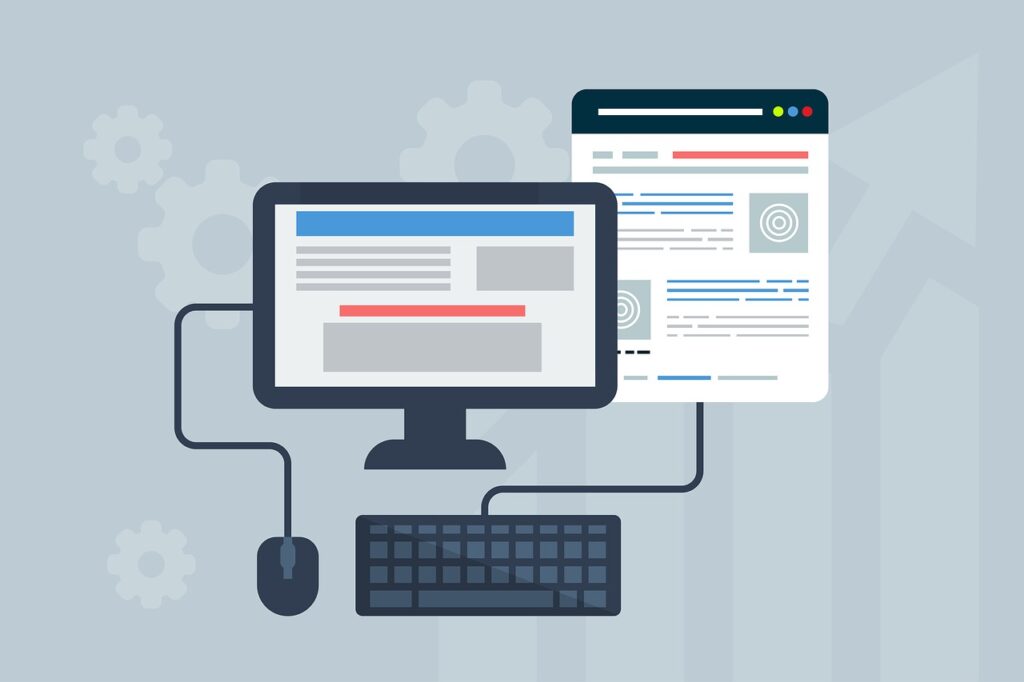In the digital age, where attention spans are shorter than ever, creating a high-converting landing page is crucial for capturing and retaining your audience’s interest. Whether you’re aiming to generate leads, promote a product, or encourage sign-ups, a well-crafted landing page can make all the difference. But what exactly goes into making a landing page that not only attracts visitors but also converts them into loyal customers? It’s a blend of art and science, involving strategic design, compelling copy, and a deep understanding of your audience.
How to Craft a High-Converting Landing Page
In this guide, we’ll walk you through the essential steps to craft a landing page that not only looks good but also performs exceptionally well. From understanding your target market to setting clear goals, writing persuasive headlines, and optimising for mobile users, we’ve got you covered. By the end of this article, you’ll have a comprehensive understanding of how to create a landing page that drives conversions and boosts your business’s success.
Ready to dive in? Let’s get started!

Understanding Your Audience
Creating a high-converting landing page starts with understanding who you’re targeting. This involves identifying your target market and creating detailed buyer personas. Knowing your audience’s needs, preferences, and pain points allows you to tailor your message to resonate with them effectively.
Identifying Your Target Market
Your target market consists of the specific group of people most likely to be interested in your product or service. To identify this group, consider factors such as demographics, psychographics, and behaviour patterns. Conducting market research and analysing customer data can provide valuable insights into who your ideal customers are.
Also, Read – Maximising Your Reach on Facebook: Strategies for Effective Marketing
Creating Buyer Personas
Once you’ve identified your target market, the next step is to create buyer personas. These are fictional representations of your ideal customers, based on real data and insights. A detailed buyer persona includes information about the customer’s age, gender, occupation, interests, challenges, and goals. By creating these personas, you can better understand and address your audience’s needs, making your landing page more relevant and appealing.
Setting Clear Goals
A successful landing page needs a clear purpose and measurable objectives. Without these, you risk creating a page that lacks direction and fails to achieve your desired outcomes.
Defining the Purpose of Your Landing Page
The first step is to define the main goal of your landing page. Are you looking to generate leads, promote a product, or encourage sign-ups? Having a clear purpose helps you focus your design and content efforts on achieving that specific objective.
Setting Measurable Objectives
Once you have a defined purpose, set measurable objectives to track your success. These could include metrics such as the number of leads generated, conversion rate, or click-through rate. Setting specific, achievable goals allows you to measure your landing page’s performance and make data-driven improvements.
Crafting a Compelling Headline
Your headline is the first thing visitors see when they land on your page, making it a critical element for capturing their attention.
Importance of a Strong Headline
A strong headline can make or break your landing page’s success. It should be clear, concise, and compelling, instantly conveying the value of your offer. A well-crafted headline encourages visitors to stay on your page and learn more about what you have to offer.
Tips for Writing Attention-Grabbing Headlines
To write an effective headline, focus on the benefits of your offer, use powerful and emotive language, and keep it short and to the point. Testing different headlines through A/B testing can also help you determine which one resonates best with your audience.
Designing an Eye-Catching Layout
An eye-catching and user-friendly design is essential for keeping visitors engaged and guiding them towards conversion.
Principles of Effective Landing Page Design
Effective landing page design involves using clean and simple layouts, consistent branding, and a visually appealing colour scheme. Your design should support your message and make it easy for visitors to understand your offer and take action.
Using Visual Hierarchy to Guide Users
Visual hierarchy refers to the arrangement of elements on your page in a way that guides visitors’ attention to the most important information first. Use larger fonts, contrasting colours, and strategic placement to highlight key elements such as your headline, benefits, and call to action.
Writing Persuasive Copy
Your landing page copy should be persuasive and focused on converting visitors into customers.
Key Elements of Persuasive Copywriting
Persuasive copywriting involves understanding your audience’s needs and desires, clearly communicating the benefits of your offer, and using strong, action-oriented language. Your copy should be concise, engaging, and tailored to your audience’s preferences.
Also, Read – Snapchat Marketing: Engaging a Younger Audience
Incorporating Benefits and Features
While features describe what your product or service does, benefits explain how it helps the user. Focus on the benefits to show your audience the value they will gain from your offer. Use bullet points and subheadings to make your copy easy to read and understand.
Creating a Strong Call to Action (CTA)
A strong call to action is crucial for guiding visitors towards conversion.
The Role of CTAs in Conversion
CTAs are the elements that prompt visitors to take a specific action, such as signing up, downloading a resource, or making a purchase. A clear and compelling CTA can significantly increase your conversion rates.
Best Practices for Crafting CTAs
To create an effective CTA, use action-oriented language, make it visually prominent, and ensure it aligns with the overall goal of your landing page. Experiment with different colours, sizes, and placements to find what works best for your audience.

Incorporating Social Proof
Social proof can enhance your landing page’s credibility and persuade visitors to take action.
Types of Social Proof to Use
There are several types of social proof you can use, including customer testimonials, reviews, case studies, and endorsements from influencers or industry experts. Choose the type that best fits your offer and audience.
How to Effectively Display Testimonials and Reviews
Display testimonials and reviews prominently on your landing page, using quotes, images, and star ratings to make them stand out. Ensure they are authentic and relatable to build trust with your audience.
Optimising for Mobile Users
With the increasing use of mobile devices, optimising your landing page for mobile users is essential.
Importance of Mobile Optimisation
A mobile-friendly landing page ensures a positive user experience for visitors accessing your site from smartphones and tablets. This can lead to higher engagement and conversion rates.
Tips for Mobile-Friendly Design
To optimise for mobile, use a responsive design that adjusts to different screen sizes, keep your layout simple, and ensure your CTA buttons are easy to tap. Test your landing page on various devices to ensure it performs well across all platforms.
Also, Read – The Future of E-commerce and Digital Marketing
Testing and Analysing Your Landing Page
Regular testing and analysis are crucial for continuous improvement.
Methods for A/B Testing
A/B testing involves creating two versions of your landing page and testing them to see which one performs better. You can test different elements such as headlines, images, copy, and CTAs to optimise your page for higher conversions.
Using Analytics to Improve Conversion Rates
Use analytics tools to track key metrics such as bounce rate, time on page, and conversion rate. Analyse this data to identify areas for improvement and make data-driven changes to enhance your landing page’s performance.
Conclusion
Crafting a high-converting landing page involves a combination of understanding your audience, setting clear goals, designing an engaging layout, writing persuasive copy, and continuously testing and optimising. By following the steps outlined in this guide, you can create a landing page that not only attracts visitors but also converts them into loyal customers. Remember, the key to success is ongoing optimisation and a deep understanding of what resonates with your audience.
FAQs
What is a Landing Page?
A landing page is a standalone web page designed specifically for a marketing or advertising campaign, where visitors land after clicking a link.
How Long Should a Landing Page Be?
The length of a landing page depends on the complexity of the offer and the amount of information needed to persuade visitors. It can range from a few sections to multiple scrollable pages.
What Metrics Should I Track for Landing Page Success?
Key metrics to track include conversion rate, bounce rate, time on page, and click-through rate.
How Often Should I Update My Landing Page?
Regular updates are important to keep your landing page relevant and effective. Consider updating it whenever you have new offers, testimonials, or data insights.
Can I Use Multiple CTAs on One Landing Page?
While it’s possible, it’s generally better to focus on a single, clear CTA to avoid confusing visitors and diluting your message.
How Do I Increase Trust on My Landing Page?
Use social proof, such as testimonials and reviews, display trust badges, and ensure your page looks professional and trustworthy.
What Common Mistakes Should I Avoid?
Avoid cluttered designs, unclear CTAs, slow load times, and failing to test and optimise your page regularly.

